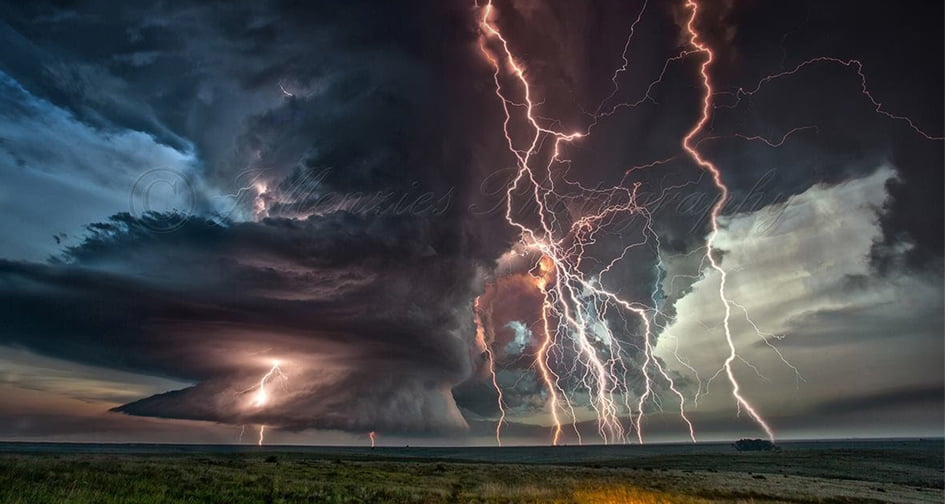Apocalyptic refers to a prophetic of devastation or ultimate doom. How is Australia on the verge of devastating weather? Just calm down and enjoy this article.
Australia is the smallest country. It is located between the South Pacific and the Indian Ocean. With the world facing many natural disasters like Hurricane Dorian in the Bahamas, tornado in Wisconsin and wildfire in California and the Amazon forest. Australia is not left behind in all these happenings. Australia is characterized by a variety of landscapes. The landscapes feature mountains, tropical rainforests, and deserts.

Australia’s location on the world map is closer to the South Pole, Antarctica. The temperature at Antarctica is getting higher, thus causing the melting of Greenland’s ice sheet. It is practical when the ice melts, it turns into water. The same thing happens to the sea ice. Once they melt, they increase the volume of the water. Thereby, causing the sea level to rise beyond the normal level. This causes a flood. Some floods have been recorded this year in Australia. Though, the floods claimed no lives. According to meteorologists, Australia should expect more rainfalls. The rainfalls may be accompanied by damaging winds and large hail.
In February 2019, some parts of Australia which include Melbourne experienced storms. The storm was accompanied by dust storms and flash floods. Many houses were lost to fire caused by lightning strikes. The storms resulted in fallen trees, destruction of power lines and buildings.

As people in Melbourne are running away from rainfalls, inhabitants of Guyra in eastern Australia need water. So it is the same for some other towns in the part of the country. Drought is moving fast into these towns. The forces that drive the drought is simply the increase in the temperature of the sea surface. This increment in the temperature has impacted the rainfall pattern in such areas. High temperature has also impacted air temperature. When the air temperature is getting warmer, it increases the fierceness of droughts. A scientist said that the general climate change is exacerbating drought, mainly because in a warmer world we experience more evaporation from the surface, and we project for that to continue in the future. So when it does rain, more of that water is likely to be lost to the atmosphere through evaporation than before human-caused climate change. Though, the governments in those areas are trying to combat the situation with day-to-day water supplies.
Another effect of the increase in temperature is wildfires. Wildfires are uncontrollable fires in an area of combustible vegetation. They can be caused by dry climate, lightning and volcanic eruption. The main causes of wildfire in Australia are lightning strikes and dry weather. A fire was spotted in the eastern part of Australia in early September. A few days later, hot red fires have been seen in the forests of New South Whales and Queensland. Many bushes and farms were destroyed. Buildings and power lines were not left out. And it doesn’t seem rain will fall anytime soon.
With all these happening, the country is affected. Every type of farmer is affected. Cattle rearers are drastically affected. Dairy cows can’t thrive in such hot temperatures. High temperature reduces the yield of the dairy cows in the country by 23%. That indicates a shortage of milk and cheese production. In extreme heatwave contributions, the production rate is reduced to about 45%.
Farmers are already scared as the drought and extreme heatwave are disrupting the nation’s food security. Australia is known for the exportation of carrots. The exportation of carrots contributes to the country’s economy. But with the emergence of harsh temperature conditions, the growth is being affected. So is the distribution of the vegetable. Also, the temperature affects the phloem of carrots hereby reducing the taste of the carrot.
The Great Barrier Reef is the world’s largest reef system in the world. It covers over 345,000 square kilometers. It’s situated off the coast of Queensland, Australia. The Great Barrier Reef is cracking. Carbon dioxide emitted by humans and greenhouses is contaminating the reef. Carbon dioxide dissolves in the ocean to produce carbonic acid. This disrupts the pH of the ocean. Carbonic acid makes the ocean to be more acidic. Another contributing factor that’s affecting the Great Barrier Reef is the alarming increase in temperature. The increasing temperature makes the ocean warmer. That action further leads to the death of some algae. The death of these algae will cause commotion in the marine ecosystem and its food web. This also led to coral bleaching. Coral bleaching happens when coral polyps flush out colorful algae that live in their tissues.
As the ocean keeps getting more acidic, the ocean becomes more uninhabitable for some organisms. The Great Barrier Reef contains a different kinds of aquatic organisms. The reef is a good avenue for fishing. Over 2000 fishermen work there. Before the coral bleaching starts taking place, the Great Barrier Reef used to generate almost A$ 1 billion Australian dollars. Also, CNN regarded the Great Barrier Reef as one of the seven natural wonders of the world. This proclamation made the Great Barrier Reef to be a tourism center. The reef generates over A$ 3.2 billion annually. With the increase in the contamination of the water by carbonic acid, the organisms in the reef are getting diseased. This has reduced the revenue that the Australian government is generating. More importantly, it’s endangering the aquatic living system. So it’s for humans who love driving or snorkeling. They can’t expose their bodies to the contamination of the water bodies.
With the increasing temperature in the South Pole, the raging inferno in the southeastern part of Australia and the contamination of the Great Barrier Reef, it is time to say things are falling apart in the country. The Australian Medical Association added insult to the injury. The professional body said climate change is a health emergency. The president of the association contributed that the increase in the temperature will affect the rate at which infectious diseases can be transmitted. He also said that it will cause a higher death rate and higher morbidity.

The government has contacted the necessary organizations both locally and internationally. They have sought help from these bodies. With the carbon emissions skyrocketing in the country, the government has partnered with the WHO. With the weather crisis happening in the country, fellow countries should help the country. Weather adversity can lead to migration. In the short term, the countries that benefit from Australia exports will be affected. So it’s the same for the countries that export goods to Australia. With the efforts of the government, the question remains: will the country of over 25 million people survive the weapons of weather?



